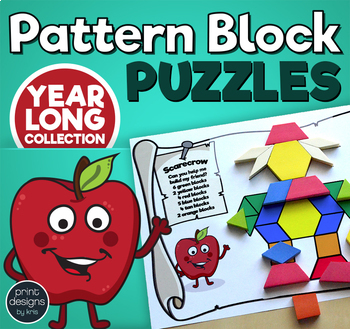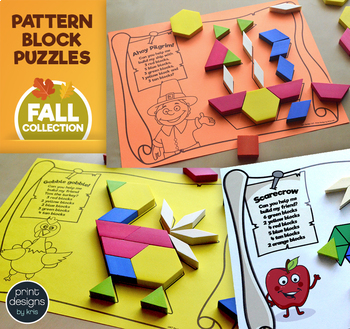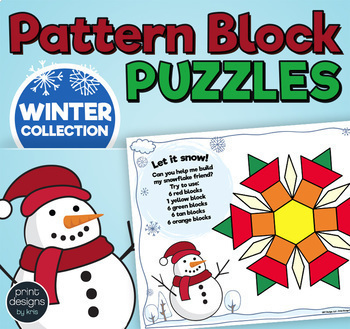Pattern Block Puzzles • Math Shape Puzzles • YEAR LONG BUNDLE
- Zip
What educators are saying
Products in this Bundle (10)
showing 1-5 of 10 products
Description
Looking for an engaging math center that you can change up all year long? This set of pattern block puzzles will keep students eager to learn and explore shapes all year long! This growing bundle will include 10 sets of 10 pattern puzzles themed to different parts of the year! Choose from three differentiated levels to allow students to progress or for different ability levels. They make an awesome math center that keeps students attention while focusing on a challenge that they will enjoy!
Grab the whole year long bundle and change out the centers each month of the year! The first two sets are in there and the third set will be there before January 1st! Get in early and save!
Each puzzles comes in three formats:
• COLOR - the easiest level that shows the student the color and shape of each block.
• OUTLINE - B&W version that has the shape of each piece.
• WHOLE - the hardest level that has just the outside lines and the list of block colors and shapes for the student to figure out.
- A sheet with shapes to cut out in case you need it.
Use the different levels to differentiate different learning levels or use them as the students progress.
What teachers are saying:
⭐⭐⭐⭐⭐ 5.0
"My students love doing the pattern puzzles. I use this in my library after students are finished checking out books. I use the cut out blocks but am hoping to find some actual foam blocks to use."
⭐⭐⭐⭐⭐ 5.0
"I love how this is broken down by months (helps me to remember to change them out in my center). I also love that I’m able to differentiate with it!"
⭐⭐⭐⭐⭐ 5.0
"This is their FAVORITE "May do" time activity. I did white out the numbers so as to make it a bit of a challenge for them and they love seeing who can make them the fastest!"
How to get TpT credit to use future purchases:
If you go to your My Purchases page, beside each purchase you will see a Provide Feedback button. Simply click it and give a quick rating and leave a short comment for the product. For every time you give feedback, TpT gives you feedback credits that you use to lower the cost of your future purchases! Win win!
Be the first to know about my new discounts, freebies and new products by clicking the FOLLOW button next to the header in my store.
Stay in Touch for special discounts and giveaways!
Check out my WEBSITE for other design products such as birthday chalkboards and greeting cards!





